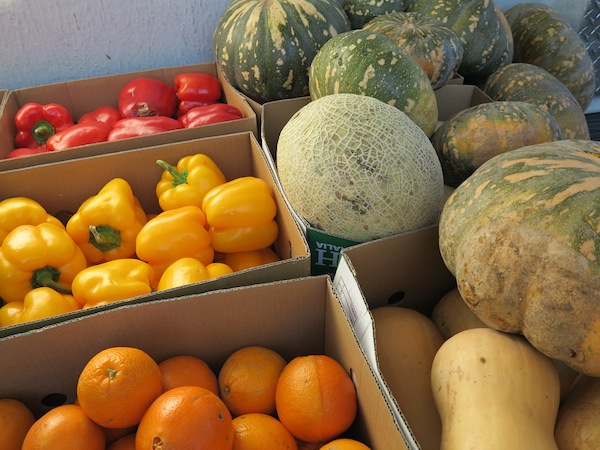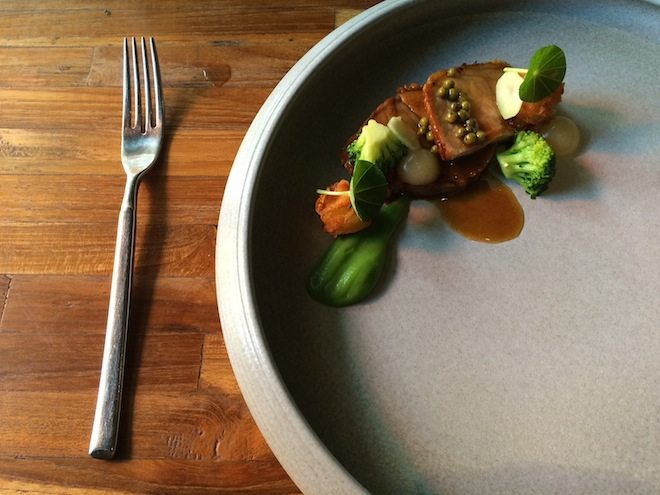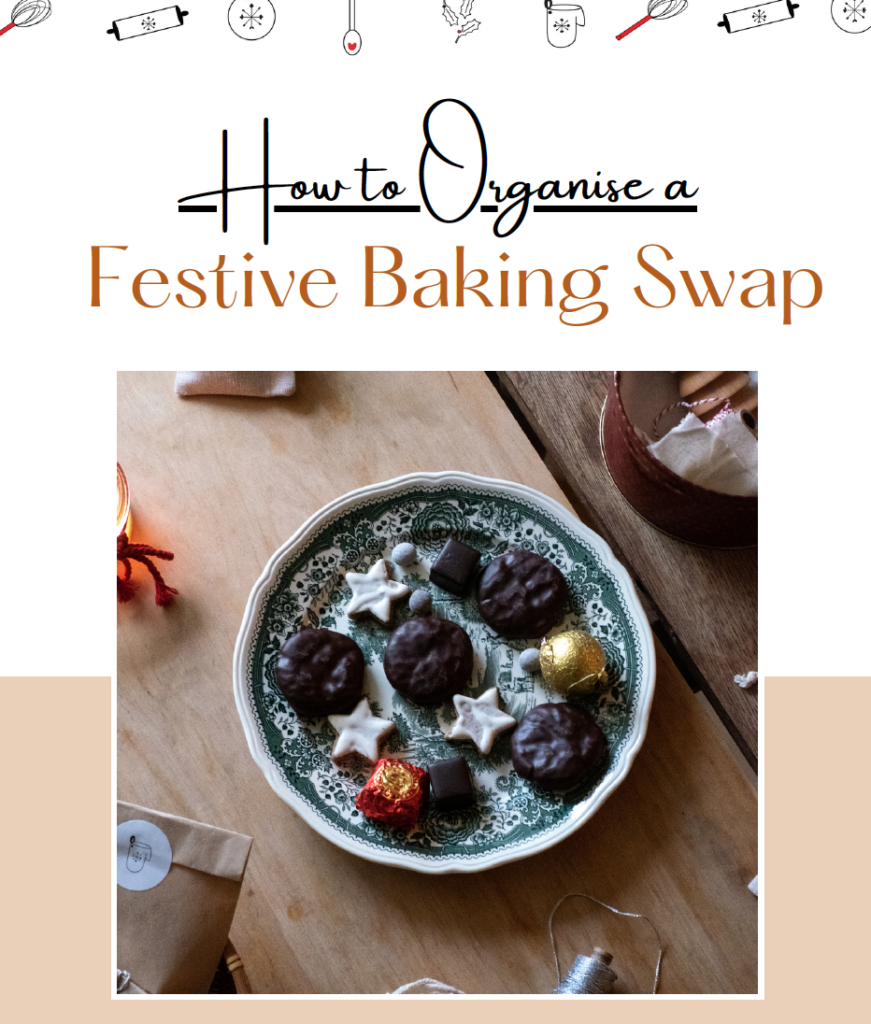Saving Tips for Foodies
How to save when you’re a foodie. It almost sounds like an oxymoron really, but how do you do it?
There comes a time in your foodie life when you begin to wonder why you can’t save more and are living pay cheque to pay cheque. If you go over your spendings you will see a common pattern: food. Whether it’s shopping for fruit and veg, getting a take-away coffee each morning or buying the latest Pana Chocolate slice it is all going straight to your hips, and by that I mean the hip pocket.
As a food blogger I am lucky that I am often invited to review a cafe or restaurant, attend events, sent product, etc but this is not the case for everyone and still despite my opportunities through food blogging I was still spending an awful amount on food. I love food unusually so and I cannot help it, it is in my blood but there comes a point where regular $100 fine dining meals cannot be justified.
Though I am no Barefoot Investor or Warren Buffet, I do know how to save. It was not easy but the moment I realised how much I was spending on food, in particular eating out I had a bit of a light bulb slash sickness feeling in the pit of my stomach. I set to work analysing my spending habits and worked out ways to not only save money, but feel a renewed sense of appreciation and value in the times I chose to eat out. This is a beautiful thing because it makes you realise how lucky we are to have the choice and money to splurge occasionally. It is humbling especially in an age when eating out has almost become an elite competition.
It is also important to have a more balanced approach to eating out by taking into consideration people that cannot buy a meal regularly. According to food rescue organisation Oz Harvest, one million Australian children go without breakfast or dinner each day. This is a sickening statistic so please do think about this and remember how lucky we all are to have the choice to even buy a meal.
Below you will find my top saving tips for foodies. It hurts at first because you will have to make some changes, in some cases they will be big changes BUT once you see your bank balance getting a little fatter and you’re excitement at the times when you can indulge, your new spending habits will be hard to shake. The foodie spending diet is the only diet I’ll ever go on!
JC x
1 – COFFEE AND TEA
This is easy saving. Start reducing your one or two a day habit and you will start to have an extra $60-&120 in the bank every month. What I did was purchase a french press, invest in a bag of coffee beans (which would last me almost a month at $12 a bag) and started making coffees at work. The same went with tea, I always made sure I had a nice stock and selection that I’d bought from a store and drank that at work or at home. I would allow myself only bought coffees for the weekend. Having said that, if you are consuming more than one or two coffees a day at the weekend then I would suggest inviting your friends to join you for a coffee at home, bake a cake or cookies and make a cosy afternoon of it.
2 – FOOD SHOPPING
What are you buying and where are you buying it? I would suggest doing some basic price comparisons. I personally started saving a lot when I started shopping at Aldi (gasp!) who for the record stock many incredible products that are made locally. I have been a supporter of theirs for years and if you have an aversion to packing your own bags (they only supply them if you pay for them), once you see how much you will save you will get over it quite quickly. Some of my favourite products are their steaks, wine and goats cheese. Shopping at local markets is also excellent because you will be buying in season, the produce is fresher, you will be supporting local farmers and reduce waste. Learn to buy things that you can use in a variety of ways and stock your cupboards with staples so you can always whip something up with what you have on hand. For example: rice, quinoa, chickpeas, lentils, tomato passata or canned tomatoes, potatoes, sweet potatoes, pasta, flour and of course fresh vegetables and herbs like: cucumber, zucchini, tomatoes, coriander, basil and parsley.
Also, look for things on your shopping list that you might be open to making instead of buying. For example making your own tomato chutney instead of buying tomato sauce, freshly squeezing your oranges instead of buying packaged juice or even try your hand at making pasta. Mind you, this approach also means you’ll be eating food that’s a lot cleaner, fresher and tastier. A little extra time is involved but it’s a win-win.
3 – MEAL PLANNING
This is really crucial for saving. You can do this week by week, say on a Sunday and work your meals around your schedule. Always cook enough so you have leftovers to take to work (a huge money saver!). A lot of people like to make a big batch of food on a Sunday that they can freeze part of and eat throughout the week. I prefer cooking smaller meals each night or every second night and then the odd batch recipe that will last me for a few work lunches. Here are some example meals which are flavoursome, easy to make and filling.
Chorizo Meatballs – these are such a comfort food, so tasty, easy to prepare and filling. Plus, you will always have some left over. I often serve these on a bed of mashed potato or sweet potato, quinoa, Israeli couscous and a little Israeli salad.
Marinated Chicken – this is my absolute go-to. I always have a 2-4 meal supply of chicken tenderloins or fillets marinating in the fridge with herbs and spices. When it comes to dinner all I do is pop them in the oven or pan fry them and make a salad and rice or make a mash as they cook. This is also a great one for left overs. For the marinade my favourite mix is turmeric, paprika, salt, pepper and cumin.
Pastas – having some freshly made pasta or packet pasta is a really great way to eat on the cheap, especially if you need to whip something up quickly. You can even go a sauceless option with olive oil, garlic, some basil and a chopped tomato. If you’d like something a bit richer try Chilli Pasta or my favourite, Smoked Salmon Gnocchi.
Curries – like stews and general pot meals a curry can go a long way. They are easy to prepare and very economical, in most cases you can make them vegetarian if you are looking at cutting out meat. Having passata, canned tomatoes or even coconut milk on hand will make a great base along with garlic, onions, herbs and spices and some delicious curry friendly veggies like pumpkin and broccoli.
Soup – similar to curries, a soup involves very minimal effort and can go a long way. Make a big batch and it will last you for a number of meals. Here are two of my favourites, Chicken Pho’ and Garlic and Ginger Pumpkin Soup.
Snacks – we all know too well what happens at 3:30pm. Preparing snacks and having them readily on hand is an essential part of saving. Instead of buying a coffee or grabbing a little snack when the afternoon slump hits, start making your own trail mix or granola and leave a bag of it at work and in your bag or backpack. In addition to this, having fruit like bananas and apples are always handy but you will also need to prepare some actual snacks (if you’re anything like me!). Some of my go-to’s are Cocoa, Date and Coconut Balls and these Bacon and Egg tarts (if you’ve ever worked with me you will be familiar with these treats).
4 – EATING OUT
Now here is the big one. Where to start? Write a list of how often you are having meals out and calculate the rough cost per week. Then multiply that figure by 52. That amount is how much you are spending eating out on food a year! I’ll give you a moment. Ok, now that you’ve digested that information, here’s what to do about it.
Write another list of all the places you love to go to and all the places you want to try (if you’re in Melbourne this will have to be updated weekly the way things are going!). Now be realistic about how many times per week you can allow yourself to eat out based on what you would like to save. When I was saving hard before my move to Jakarta, I personally allowed myself about four meals out per week maximum. When I did go out it was a big deal and I made sure I picked somewhere on my list.
Apart from planning your dinner dates at places on your list, start scoping out whether some of those restaurants have a special banquet lunch or meal/drink special. For example: Horn Please have a $25 all-you-can-eat curry night on Sundays, Italico has pizzas from $13 on a Monday night and on Sundays The Commoner do a roast lunch for $33.
Apart from looking out for specials consider purchasing an Entertainment Book. Before I moved I had been buying them for years. You will never use the entire book (it’s impossible) but you will make your money back on the purchase of the book within the first few meals out. Some of the restaurants featured, particularly on their special gold card (more high end restaurants) will surprise you. In most cases you will be saving minimum 25% and there are also 2-for-1 offers at more relaxed establishments.
You might also like to bookmark social enterprise events like the Scarf Dinners. Their upcoming spring dinners are $40 for two courses and will be run at Jorg from October 7. Funds raised will go towards hospitality training, mentorship and work experience for young refugees, new migrants and asylum seekers. Other social enterprises where the money from your meal or purchase extends to disadvantaged communities and people that truly need your help include: The Social Studio, Lentil As Anything, Feast of Merit, Kinfolk, Charcoal Lane and newbie Longstreet Coffee just to mention a few! Also, in the lead up before Christmas and the new year make your Christmas catch ups at restaurants that are involved with DineSmart. You can leave a donation or tip to your bill and 100% of those funds will be distributed locally to people that are homeless or at risk.
Apart from eating out, think of creative ways to have the dining out experience at home. Have a picnic in your garden or local park, invite friends round and get them to test out new recipes, have a BBQ, buy some cheeses and some lovely wines and have your friends join you for a night cap. Some of my close friends started a dinner event that would be held at a different home with a new theme every few months, they also did a moveable feast – a progressive dinner by bike!
5 – USE ALL YOUR FOOD
There are so many things we can do to maximise on produce we think should be discarded. For example in meat eating households save your bones and boil them. Save your veggie ends like carrot tops, zucchinis, celery, etc. All of these ingredients will make you a delicious and nutritious homemade stock that you can freeze and always have on hand. The stock can then be used to flavour veggies, rice, quinoa or even as a base for soups. Stick to your meal plans and if you decide to go out spontaneously for dinner, cook your prepped dinner when you get home and take it to work the next day. A few of you probably rolled your eyes here or said ‘who can be bothered’, if you want to save you have to make an effort to be bothered and be accountable for what you eat and waste. According to Oz Harvest’s 2014 Annual Report, Australians throw out one in five shopping bags equating to $1,036 dollars a year – literally throwing money away.
By making a few small steps, or even if you just choose to take one thing out from this piece and apply it, you will start to make some saving headway and learn to love your food even more!
Have I missed anything or do you have any saving tips for foodies? Would you like to learn more about cheap eats or budget meals? If so, we would love to hear your thoughts and suggestions in the comments section below!















